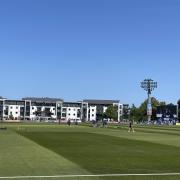
In the past few months, as a result of lockdown, there has been a significant increase in shows being watched from home on streaming services such as Netflix. These shows range from historical dramas to murder mysteries to even anime. Anime is a type of hand drawn animation originating from Japan and the spike in popularity of certain anime has received noticeable recognition from both areas in Japan and outside of the country. However, how does the portrayal of women in anime have an effect on its audience and could this reflect how women are treated in society today?
All successful anime include characters which viewers can relate to or connect with, wether it being a main character, villain or side characters. However, after watching a number of these animated shows during the lockdown, I realised that usually the male characters have much more intriguing personalities than their female counterparts and that there is a certain standard society expects women to be at, which is unintentionally revealed to people who are watching it. This is often the image where female characters are supposedly quite weak or delicate, which is what many - both men and women - would say is the ‘ideal’ way for a women to be identified as. This expectation, and the fact that many anime mostly only have male characters which have unique or benevolent personalities could potentially reflect on how women are still treated unequally today and may also impact the views of the audience watching the show.
However, in contrary to what was said, many anime have included female characters within plots that aim to defy the stereotypical standards which have already been set. These are shows where women are able to have their own individuality and are equally treated in modern society. This is possibly also why many of them have become increasingly popular over the past few years, especially with teens and could also perhaps pave the way for many anime to come and follow in these footsteps.



























